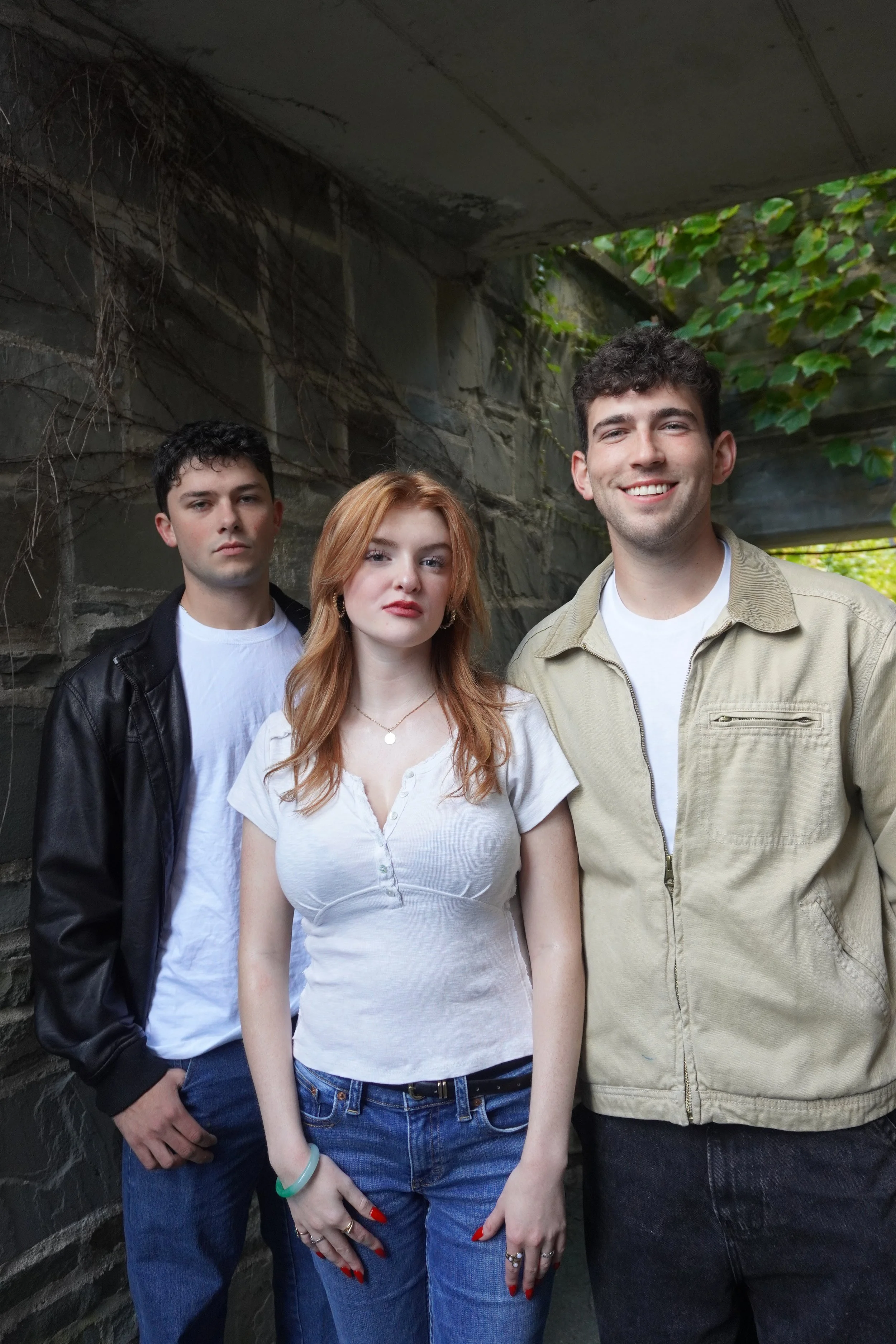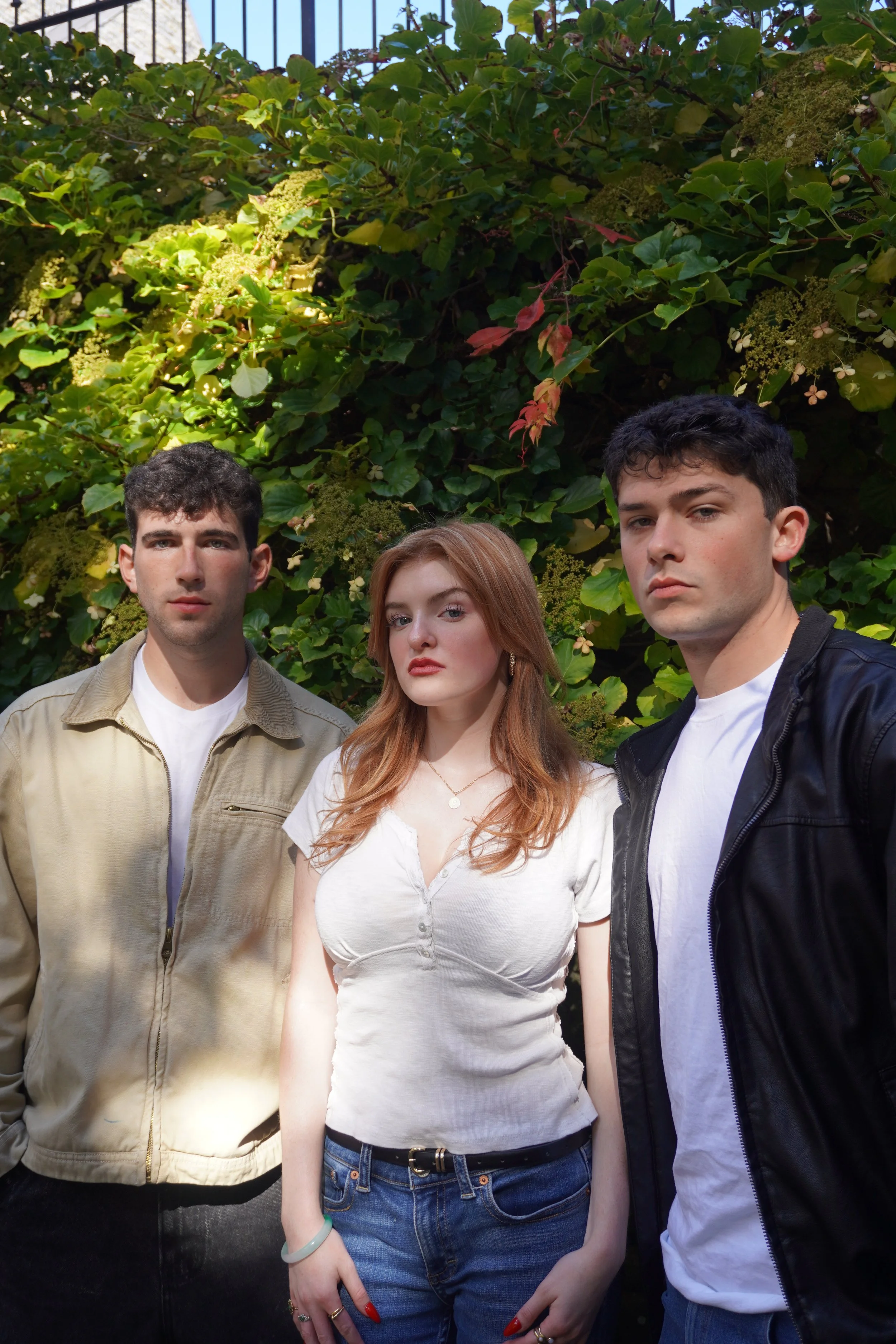♡caught in the middle: why we can’t resist love triangles♡
by libby hale clark
Watching my friends obsess over love triangles — sending each other fan edits and memes debating which guy deserves the main character — I couldn’t help but wonder: what is it about this trope that makes it so interesting?
The love triangle is hardly new; we’ve seen it countless times, from The Summer I Turned Pretty, to Twilight, to The Hunger Games, yet audiences never seem to get tired of it. To understand this phenomenon, I looked at it from two perspectives: why viewers are drawn to love triangles, and why producers and writers continue to return to this storyline.
Why Viewers Are Drawn to Love Triangles
Studies show that people use TV and movies to escape their own lives, especially when experiencing stress, negative emotions, or social anxiety (Greenwood, 2008). After a long day, they turn to entertainment to forget their problems, and the chaos of a love triangle offers just that. These narratives dominate popular media, and while not always realistic, that’s exactly what makes them so compelling; they let us live vicariously through the characters’ ups and downs.
Part of this appeal comes from the fantasy of being desired. Watching these shows allows audiences to imagine themselves in the character’s shoes, experiencing what it feels like to be wanted and pursued, something everyone seeks. Psychologists call this the need for affiliation, our natural drive to form social bonds and feel accepted (“Need for,” 2018). TV and movies let viewers imagine themselves as the object of affection, fulfilling this need in a safe, entertaining way.
The rise of streaming platforms and unlimited internet access has changed how people consume media, making it easier to immerse themselves in fictional worlds. This accessibility strengthens parasocial relationships; one-sided emotional bonds viewers form with characters (“Parasocial”). Audiences become invested in these characters and their storylines, sharing and discussing content online, which can make them feel even more part of the show’s world.
Suspense and unpredictability also keep viewers engaged. Unlike traditional romances, love triangles show the turbulence of real relationships. Research shows that watching emotionally intense dramas activates the endorphin system, increasing pain tolerance, and making people feel more connected to those around them. When viewers get caught up in a love triangle, they enjoy the drama while also experiencing a sense of social bonding (Dunbar et al, 2016). This unpredictability keeps audiences invested, wondering who will be chosen and how the story will unfold, episode after episode.
Why Producers and Writers Keep Returning to Love Triangles
From a storytelling perspective, love triangles are useful because they quickly set up the plot while revealing different sides of a character, making them more relatable. Centering a story on a love triangle places the protagonist in a moral dilemma: choosing between two lovers is difficult, and in facing this choice, the character must consider who they want to be. This adds depth to the character, helping viewers connect with what they’re feeling on the inside. This kind of internal struggle often affects the protagonists' decisions. Love triangles also create external conflict through jealousy and rivalry, and when the love interests are siblings—as in My Life with the Walter Boys, The Summer I Turned Pretty, or The Vampire Diaries—this adds another layer of complexity.
The complexity of love triangles allows the story to stretch across episodes or entire seasons. This keeps audiences invested while giving writers a flexible framework to explore relationship dynamics and the direction of the story. It creates ongoing tension, as viewers constantly speculate about who will be chosen and how the relationships will evolve.
For producers, love triangles are a reliable way to keep audiences engaged. Fans pick sides, root for their favorites, and discuss outcomes on social media, creating community and conversation around the show. Often, one love of interest is portrayed as the logical or “safe” choice, while the other is wilder or more unpredictable. This keeps fans debating and involved, while building fandom culture and social buzz. It also makes the story easier to promote, with opportunities for merchandise like apparel, collectibles, and other products that capitalize on audience investment.
With the recent popularity of The Summer I Turned Pretty, it’s clear that love triangles aren’t going anywhere anytime soon. With online fandoms and streaming platforms keeping audiences constantly engaged, this trope remains a powerful tool for storytelling and audience connection. The drama, suspense, and relatability ensure it will continue to captivate viewers for years to come.
References
American Psychological Association. (2018). Need for affiliation. APA Dictionary of Psychology. https://dictionary.apa.org/need-for-affiliation
Dunbar, R. I. M., Teasdale, B., Thompson, J., Budelmann, F., Duncan, S., van Emde Boas, E., & Maguire, L. (2016). Emotional arousal when watching drama increases pain threshold and social bonding. Royal Society Open Science, 3(9) https://royalsocietypublishing.org/doi/10.1098/rsos.160288
Greenwood, D.N. (2008) Television as escape from self. Psychological predictors of media involvement. Personality and Individual Differences. 44 (p.414-424) https://www.sciencedirect.com/science/article/pii/S0191886907003005
Parasocial Relationships. (n.d.) Psychology Today. https://www.psychologytoday.com/us/basics/parasocial-relationships




